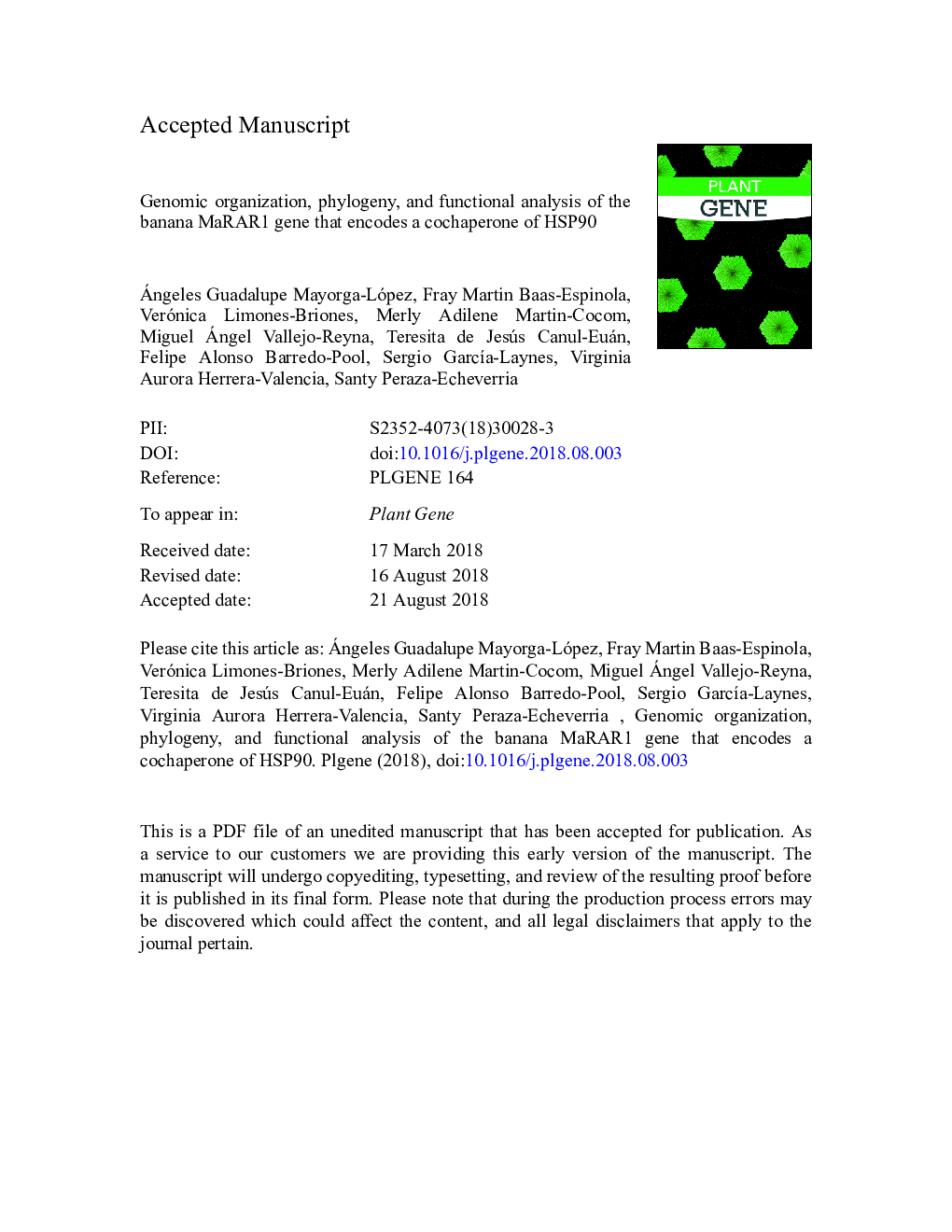| Article ID | Journal | Published Year | Pages | File Type |
|---|---|---|---|---|
| 10137915 | Plant Gene | 2018 | 38 Pages |
Abstract
The RAR1 gene encodes a cochaperone of HSP90 that is required for disease resistance, which is mediated by multiple NBS-LRR resistance receptors in plants. An ortholog of RAR1 has not yet been isolated and characterized in banana, which is an important food security crop. In this study, we isolated a banana RAR1 gene (MaRAR1) and characterized its structure, genomic organization, phylogeny, expression, subcellular localization and function in plant immunity. MaRAR1 was present as a single-copy gene in the Musa acuminata ssp. malaccensis genome. An analysis of the deduced amino acid sequence revealed two highly conserved CHORD domains common among known RAR1 proteins and the presence of all residues involved in binding to the chaperone HSP90 and the cochaperone SGT1. Interestingly, MaRAR1 was surrounded by several genes encoding transcription factors and other proteins whose homologs in Arabidopsis thaliana and rice have been implicated in biotic or abiotic stress responses. The phylogenetic analysis showed that MaRAR1 clustered in the monocot clade and supported the idea of an ancient origin for this type of protein. Additionally, MaRAR1 was constitutively expressed in vegetative and reproductive tissues, and its protein was localized in the cytoplasm and nucleus of onion epidermal cells. Moreover, the overexpression of this gene in transgenic (T2) tobacco plants enhanced resistance to the bacterial pathogen Pseudomonas syringae pv. tabaci. The new information gained in this work has expanded our knowledge of RAR1 in the Musaceae family and provided useful tools for enhancing disease resistance in banana and other crops.
Keywords
Related Topics
Life Sciences
Agricultural and Biological Sciences
Plant Science
Authors
Ángeles Guadalupe Mayorga-López, Fray Martin Baas-Espinola, Verónica Limones-Briones, Merly Adilene Martin-Cocom, Miguel Ángel Vallejo-Reyna, Teresita de Jesús Canul-Euán, Felipe Alonso Barredo-Pool, Sergio GarcÃa-Laynes,
